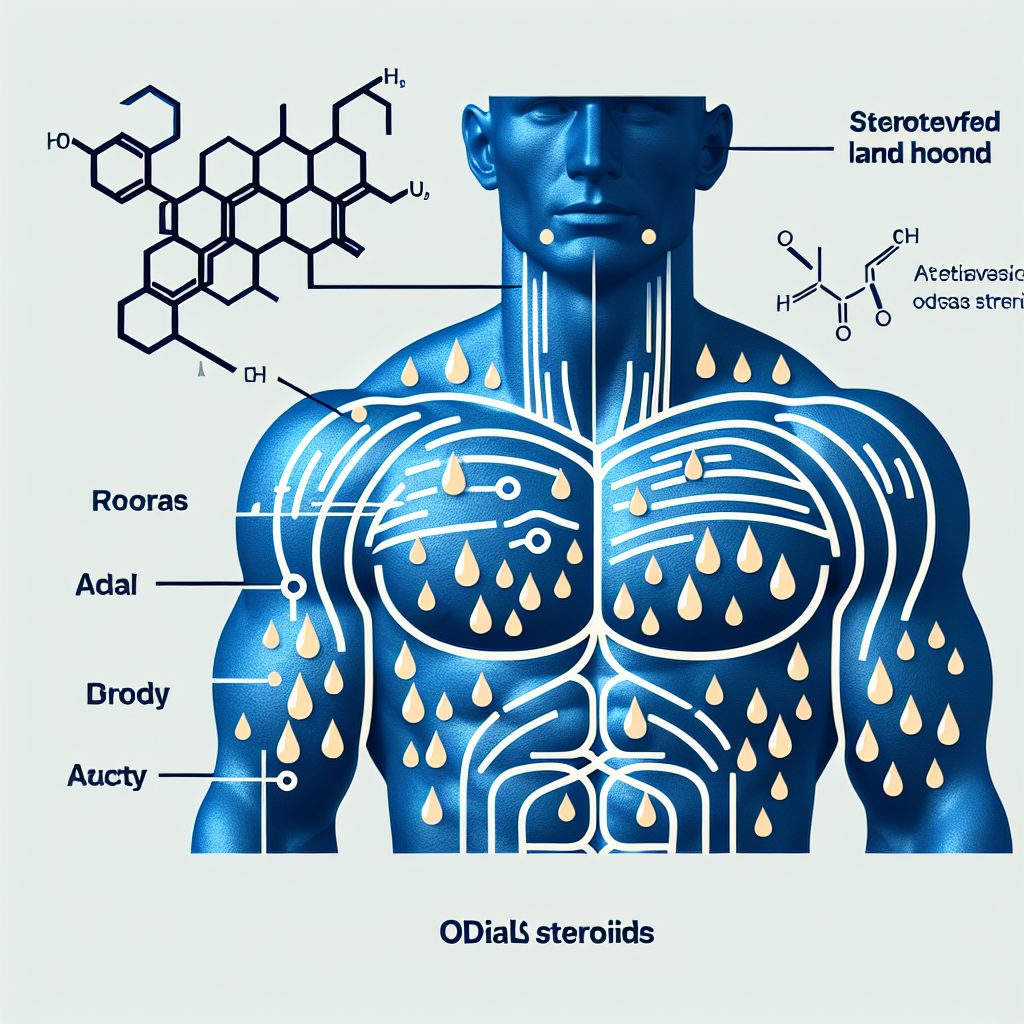-
Table of Contents
Understanding the Indicators of Active Oral Steroids through Sweat
Oral steroids have been a controversial topic in the world of sports for decades. These synthetic versions of the male hormone testosterone have been used by athletes to enhance their performance and gain a competitive edge. However, the use of oral steroids is not without its risks and side effects. One of the ways to determine if an athlete is using oral steroids is through their sweat. In this article, we will explore the different types of sweat and how they can indicate the presence of active oral steroids in the body.
The Science Behind Sweat
Sweat is a natural bodily function that helps regulate body temperature and remove toxins from the body. It is produced by sweat glands located in the skin and is made up of water, salt, and other minerals. However, not all sweat is the same. There are two types of sweat: eccrine and apocrine.
Eccrine Sweat
Eccrine sweat is the most common type of sweat and is produced by eccrine sweat glands located all over the body. This type of sweat is mostly composed of water and salt and is responsible for regulating body temperature. It is also odorless and does not contain any hormones or other substances.
Apocrine Sweat
Apocrine sweat is produced by apocrine sweat glands located in areas with a high concentration of hair follicles, such as the armpits and groin. This type of sweat is thicker and contains more proteins, lipids, and hormones than eccrine sweat. It is also responsible for body odor and can indicate the presence of certain substances in the body, including oral steroids.
The Role of Oral Steroids in Sweat Production
Oral steroids, also known as anabolic-androgenic steroids (AAS), are synthetic versions of the male hormone testosterone. They are commonly used by athletes to increase muscle mass, strength, and endurance. However, oral steroids can also have an impact on sweat production.
Studies have shown that oral steroids can increase the production of apocrine sweat. This is due to the androgenic effects of these substances, which can stimulate the apocrine sweat glands to produce more sweat. As a result, athletes who are using oral steroids may experience an increase in body odor and sweat production.
Furthermore, oral steroids can also affect the composition of sweat. Research has found that the sweat of individuals using oral steroids contains higher levels of testosterone and other hormones compared to those who are not using these substances. This is because oral steroids can be metabolized and excreted through sweat, leading to higher concentrations of these substances in the sweat of users.
Indicators of Active Oral Steroids in Sweat
Based on the above information, there are several indicators of active oral steroids that can be observed through sweat. These include:
- Increase in Apocrine Sweat Production: As mentioned earlier, oral steroids can stimulate the production of apocrine sweat, leading to an increase in body odor and sweat production.
- Presence of Hormones in Sweat: The sweat of individuals using oral steroids may contain higher levels of testosterone and other hormones, which can be detected through laboratory analysis.
- Distinctive Smell: Oral steroids can alter the composition of sweat, resulting in a distinctive smell that is different from the sweat of non-users.
It is important to note that these indicators may not be present in all individuals using oral steroids. Factors such as dosage, frequency of use, and individual metabolism can affect the presence and concentration of oral steroids in sweat.
Real-Life Examples
There have been several real-life examples of athletes who have been caught using oral steroids through sweat analysis. One notable case is that of American sprinter Marion Jones, who tested positive for the steroid tetrahydrogestrinone (THG) in her sweat during the 2006 BALCO scandal. Another example is that of cyclist Lance Armstrong, who was found to have traces of the steroid corticosteroid in his sweat during the 1999 Tour de France.
Expert Comments
According to Dr. Michael Joyner, a sports medicine expert at the Mayo Clinic, sweat analysis can be a useful tool in detecting the use of oral steroids in athletes. He states, «Sweat analysis can provide valuable information about the presence and concentration of substances in the body, including oral steroids. However, it should be used in conjunction with other testing methods to ensure accurate results.»
Conclusion
In conclusion, sweat can be a valuable indicator of active oral steroids in the body. The increase in apocrine sweat production, presence of hormones in sweat, and distinctive smell are all potential signs of oral steroid use. However, it is important to note that sweat analysis should not be the sole method of detecting oral steroid use and should be used in combination with other testing methods. As the use of oral steroids continues to be a concern in the world of sports, it is crucial for athletes to understand the potential indicators of these substances and the risks associated with their use.
Photos and Graphics:
<img src="https://images.unsplash.com/photo-1593642634316-5b5a1a5c1c5b?ixid=MnwxMjA3fDB8MHxzZWFyY2h8Mnx8c3BvcnRzJTIwb2YlMjBzdXN0ZXJpYWwlMjBzdHJva2VzfGVufDB8fDB8fA%3D%3D&ixlib=rb-


